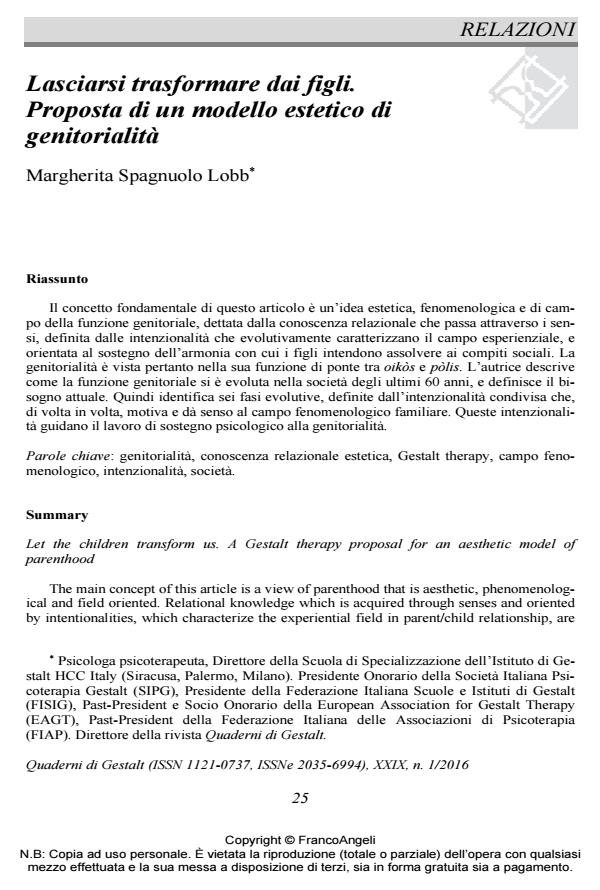Let the children transform us. A Gestalt therapy proposal for an aesthetic model of parenthood
Journal title QUADERNI DI GESTALT
Author/s Margherita Spagnuolo Lobb
Publishing Year 2017 Issue 2016/1
Language Italian Pages 15 P. 25-39 File size 212 KB
DOI 10.3280/GEST2016-001003
DOI is like a bar code for intellectual property: to have more infomation
click here
Below, you can see the article first page
If you want to buy this article in PDF format, you can do it, following the instructions to buy download credits

FrancoAngeli is member of Publishers International Linking Association, Inc (PILA), a not-for-profit association which run the CrossRef service enabling links to and from online scholarly content.
The main concept of this article is a view of parenthood that is aesthetic, phenomenological and field oriented. Relational knowledge which is acquired through senses and oriented by intentionalities, which characterize the experiential field in parent/child relationship, are the tools of this model, which is aimed to support the harmonic involvement of children in society. Parenthood functions as a bridge between home (Oikòs) and society (Pòlis). The author describes how parental functions have developed in society and identifies six phases in the development of parent/child relationships. These phases are defined by the experience of shared intentionality in the field. In clinical practice, these intentionalities in the field lead the therapeutic support of families and parental couples.
Keywords: Parenthood, aesthetics relational knowledge, Gestalt therapy, phenomenological field, intentionality, society.
- Le ‘maintenant-pour-l’ensuite’ Margherita Spagnuolo Lobb, Joseph Caccamo, in Cahiers de Gestalt-thérapie /2018 pp.58
DOI: 10.3917/cges.039.0058
Margherita Spagnuolo Lobb, Lasciarsi trasformare dai figli. Proposta di un modello estetico di genitorialità in "QUADERNI DI GESTALT" 1/2016, pp 25-39, DOI: 10.3280/GEST2016-001003